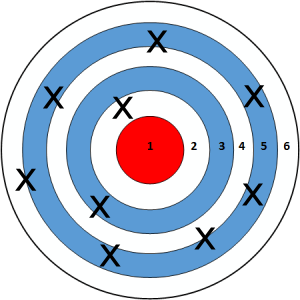bins = np.arange(0.5, 6.6, 1)
# Note that you can add titles to your visualizations, like this!
die.plot(kind='hist', y='face', bins=bins, density=True, ec='w',
title='Probability Distribution of a Die Roll',
figsize=(5, 3))
# You can also set the y-axis label with plt.ylabel.
plt.ylabel('Probability');

